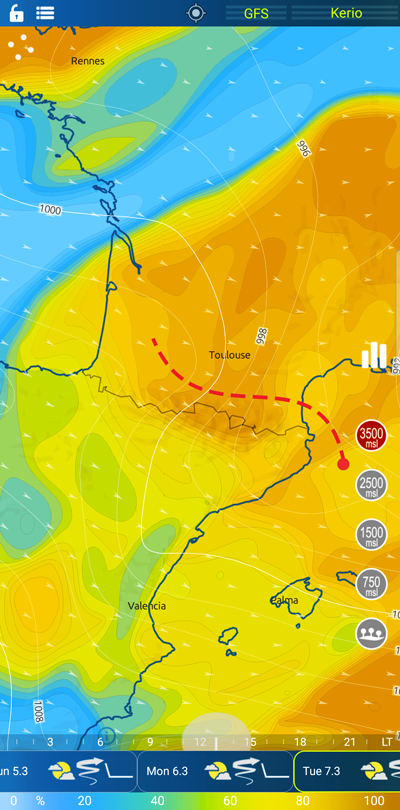Now also free widgets
How to do it
Select the main map icon for relative humidity.
A color map is displayed in the range 0..100%
On the right side, you can choose a map for a specific height.

Relative humidity of the air affects thermal paragliding glide in several ways:
Impact on thermal formation: Moist air can promote the formation of thermals. The presence of water in the air allows for cloud formation and condensation of water vapor, which can lead to the creation of thermal bubbles. Higher relative humidity may indicate a greater chance of thermal updrafts and better thermal conditions for flying.
Atmospheric stability: Moist air can influence the stability of the atmosphere. In high relative humidity conditions, the air can be less stable, leading to the formation of more thermal updrafts and stronger lift. Conversely, low relative humidity can result in a more stable atmosphere with weaker thermals.
Visibility: Moist air can affect visibility. High relative humidity can create clouds and fog, reducing visibility and limiting visibility during flight.
What is relative humidity?
Relative humidity refers to the amount of water vapor present in the air compared to the maximum amount of water vapor the air can hold at a given temperature. It is expressed as a percentage.
The formation of relative humidity in the atmosphere occurs through the process of evaporation and condensation. When water evaporates from surfaces such as oceans, lakes, and land, it turns into water vapor and enters the air. The warmer the air, the more water vapor it can hold.
As the air temperature cools, it becomes saturated with water vapor, and condensation occurs. Condensation happens when the air reaches its dew point temperature, which is the temperature at which the air becomes saturated. At this point, the air cannot hold any more water vapor, so excess moisture condenses into visible water droplets or forms clouds.
Relative humidity is influenced by factors such as temperature and the presence of water sources. Warmer air can hold more water vapor, so the relative humidity decreases as the temperature rises. Conversely, as the air temperature drops, the relative humidity increases, and if it reaches 100%, condensation occurs, leading to the formation of dew, fog, or precipitation.
Relative humidity is an essential parameter in weather forecasting, as it affects various atmospheric processes and conditions, including cloud formation, precipitation, and the overall comfort level for humans.
